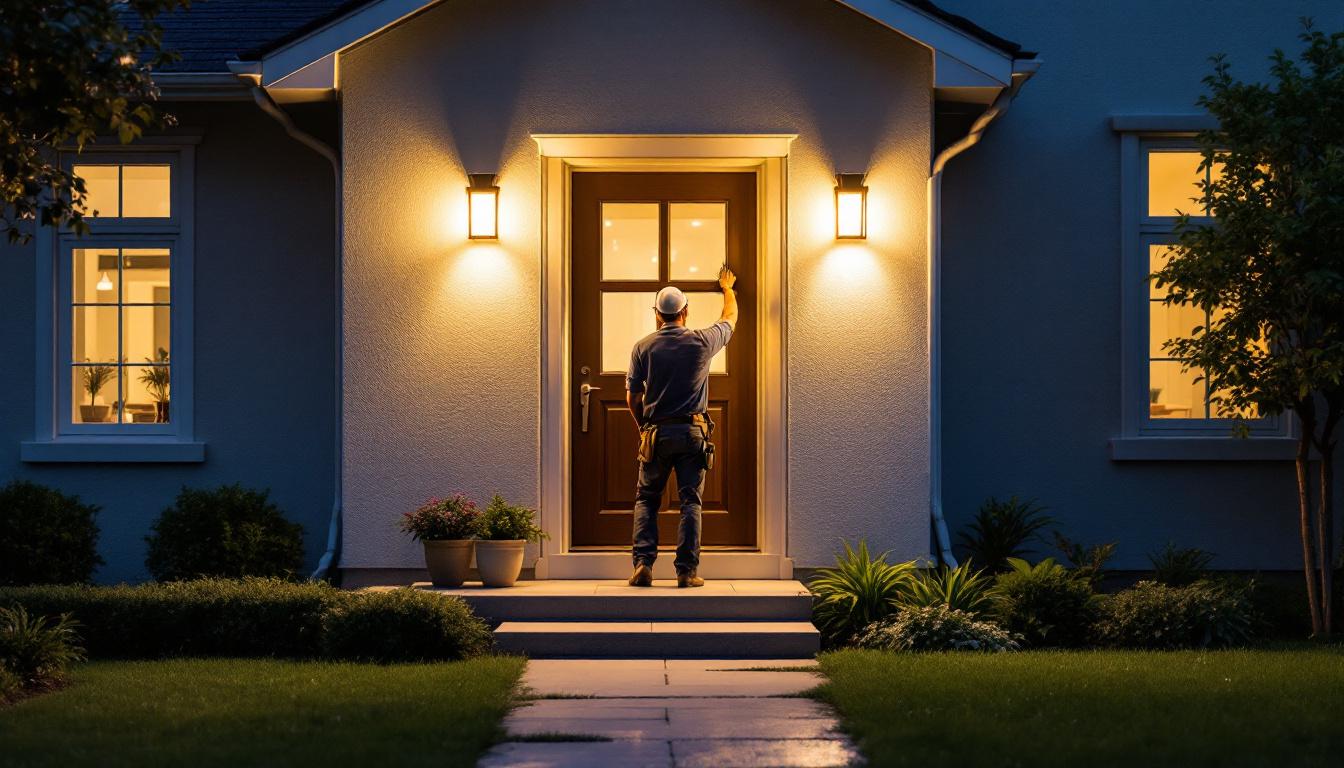
tape lighting has emerged as a versatile and innovative solution in the world of lighting design. It offers a unique way to enhance spaces, providing both functional and aesthetic benefits. As lighting contractors continue to explore the capabilities of tape lighting, insights from industry experts can illuminate the best practices and applications. This article delves into the nuances of tape lighting, offering valuable information for professionals in the field.
Tape lighting, often referred to as LED strip lighting, consists of flexible circuit boards populated with small LED lights. These strips can be adhered to various surfaces, making them ideal for a wide range of applications. Their flexibility allows for creative installations, whether in residential or commercial settings. Additionally, the low profile of tape lighting means it can be discreetly integrated into existing designs, providing illumination without overwhelming the aesthetic of a space.
There are several types of tape lighting available, each designed for specific applications. The most common types include standard white LED strips, color-changing RGB strips, and high-output options for areas requiring brighter illumination. Understanding the differences between these types can help contractors choose the right product for their projects. Furthermore, some tape lighting options come with adjustable brightness and color temperature features, allowing for even greater customization to suit various environments and preferences.
Standard white LED strips are ideal for general lighting and can vary in color temperature, from warm to cool white. Color-changing RGB strips offer dynamic lighting options, allowing users to create different moods and atmospheres. High-output strips are perfect for task lighting or areas where more illumination is needed, such as kitchens or workspaces. In addition, there are also specialty strips designed for specific effects, such as neon-style tape lighting that mimics the look of traditional neon signs, adding a unique flair to any installation.
The versatility of tape lighting enables its use in various applications. In residential settings, it can be installed under cabinets, along staircases, or as accent lighting in living rooms. In commercial spaces, tape lighting can highlight architectural features, illuminate displays, or provide ambient lighting in restaurants and retail stores. Beyond these common uses, tape lighting can also enhance the visual appeal of artwork or photographs, drawing attention to the pieces while providing a soft glow that complements the overall decor.
Moreover, tape lighting can also be used outdoors. Weather-resistant options are available, allowing for creative installations in gardens, patios, or along walkways. This adaptability makes tape lighting a favored choice among contractors looking to provide innovative solutions for their clients. Additionally, the use of tape lighting in outdoor settings can create inviting atmospheres for evening gatherings, transforming patios into cozy retreats or pathways into illuminated guides that enhance safety and ambiance. The ability to control these lights remotely via smart home systems further elevates their functionality, allowing for seamless integration into modern lifestyles.
Installing tape lighting requires careful planning and execution. Proper installation not only ensures optimal performance but also enhances the overall aesthetic of the space. Here are some best practices that lighting contractors should consider.
Before installation, it is crucial to prepare the surface where the tape lighting will be applied. The surface should be clean, dry, and free from dust or grease. A well-prepared surface allows for better adhesion, ensuring that the tape lighting remains securely in place over time.
In some cases, it may be beneficial to use additional adhesive or mounting clips, especially in areas where the tape may be subject to movement or stress. This extra support can prevent peeling and ensure a long-lasting installation. Furthermore, contractors should also assess the surface material; for instance, textured surfaces may require a different approach compared to smooth surfaces. Using a primer or adhesive promoter can enhance adhesion on challenging surfaces, ensuring that the tape lighting performs optimally without the risk of detachment.
Choosing the right power supply is essential for the successful operation of tape lighting. The power supply must match the voltage requirements of the LED strips being used. Most tape lighting operates on either 12V or 24V, so contractors should verify the specifications before making a selection.
Additionally, it is important to consider the total wattage of the tape lighting installation. Overloading a power supply can lead to overheating and potential failure. Contractors should calculate the total wattage required and select a power supply that can handle this load with some margin for safety. It’s also wise to consider the location of the power supply; placing it in a well-ventilated area can help dissipate heat and prolong the lifespan of both the power supply and the tape lighting. Moreover, using dimmable power supplies can provide flexibility in lighting design, allowing users to adjust brightness levels according to their needs and preferences, thereby enhancing the versatility of the installation.
Designing with tape lighting opens up a world of possibilities. Its flexibility allows for creative solutions that can transform any space. Here are some design considerations to keep in mind.
One of the most effective ways to use tape lighting is to create layers of light within a space. This technique involves combining ambient, task, and accent lighting to enhance the overall atmosphere. Tape lighting can serve as a key component in this layering process.
For example, under-cabinet tape lighting in a kitchen provides task lighting for food preparation while also creating a warm glow that enhances the overall ambiance. Similarly, tape lighting can be used to highlight artwork or architectural features, adding depth and interest to the design.
The color temperature of tape lighting can significantly impact the mood of a space. Warmer tones create a cozy and inviting atmosphere, making them ideal for living areas and bedrooms. Cooler tones, on the other hand, can promote focus and productivity, making them suitable for offices and workspaces.
Contractors should consider the intended use of each space when selecting the color temperature of tape lighting. Additionally, incorporating color-changing RGB strips can provide versatility, allowing clients to adjust the mood according to their preferences.
As energy efficiency becomes increasingly important, tape lighting stands out as a sustainable option. LED technology is known for its low energy consumption and long lifespan, making it an environmentally friendly choice. Here are some points to consider regarding energy efficiency.
While the initial investment in tape lighting may be higher than traditional lighting options, the long-term savings can be significant. LED tape lighting consumes less energy, leading to lower utility bills over time. Additionally, the longevity of LED lights means reduced replacement costs, further enhancing their cost-effectiveness.
Using energy-efficient lighting solutions like tape lighting contributes to a reduced carbon footprint. By choosing LED technology, contractors can help their clients make more sustainable choices, aligning with the growing demand for eco-friendly solutions in the market.
While tape lighting offers numerous benefits, it is not without its challenges. Understanding these potential issues and their solutions can help contractors navigate any obstacles that may arise during installation or use.
One common challenge with tape lighting is heat management. Although LED lights generate less heat than traditional bulbs, they can still overheat if not installed correctly. This overheating can lead to reduced performance and a shorter lifespan.
To mitigate this issue, contractors should ensure proper ventilation around the tape lighting installation. Using aluminum channels or heat sinks can help dissipate heat effectively, prolonging the life of the LEDs and maintaining optimal performance.
Adhesive failure is another concern that can affect tape lighting installations. Over time, the adhesive backing may degrade, causing the tape to peel away from the surface. This issue can be particularly problematic in areas with high humidity or temperature fluctuations.
To address this challenge, contractors can use additional mounting clips or a stronger adhesive. Ensuring that the surface is properly prepared before installation can also enhance adhesion and reduce the likelihood of failure.
The world of tape lighting is constantly evolving, with new technologies and trends emerging regularly. Staying informed about these developments can help contractors remain competitive and offer the best solutions to their clients.
One of the most significant trends in lighting is the integration of smart technology. As smart home systems become more prevalent, tape lighting is increasingly being designed to work seamlessly with these technologies. This integration allows users to control their lighting through mobile apps or voice commands, enhancing convenience and customization.
Contractors should consider offering smart tape lighting solutions to clients looking for modern and innovative options. This can include features such as programmable color changes, dimming capabilities, and scheduling functions.
As demand for personalized lighting solutions grows, manufacturers are responding by offering enhanced customization options for tape lighting. This includes a wider variety of colors, lengths, and brightness levels, allowing contractors to tailor solutions to the specific needs of their clients.
By staying ahead of these trends, contractors can position themselves as leaders in the industry, providing cutting-edge solutions that meet the evolving demands of the market.
Tape lighting represents a dynamic and versatile option for lighting contractors looking to enhance their projects. With its wide range of applications, energy efficiency, and design flexibility, it is no wonder that tape lighting has gained popularity in both residential and commercial settings.
By understanding the intricacies of tape lighting, including installation best practices, design considerations, and emerging trends, contractors can provide valuable insights and solutions to their clients. As the lighting industry continues to evolve, staying informed and adaptable will be key to success in this competitive field.
Ready to elevate your lighting projects with the innovative tape lighting solutions discussed in this article? Look no further than LumenWholesale, where we provide contractors with the highest quality, spec-grade lighting products at unbeatable wholesale prices. Say goodbye to local distributor markups and hello to superior lighting products that meet the highest industry standards. With LumenWholesale, bulk buying is a breeze, thanks to free shipping and transparent pricing. Don’t compromise on quality or value—visit Wholesale Lighting at the Best Value to discover our extensive selection and start transforming your spaces today.

Discover the essential guide to candelabra bulb base sizes and transform your lighting projects with ease.

Discover how top lighting contractors leverage innovative light sensor pull chain technology to enhance efficiency and design.

Discover the common pitfalls lighting contractors face when installing solar front door lights.

Discover the essential guide for lighting contractors with “Plug In Switch: The Ultimate Handbook.” Uncover expert tips, innovative techniques, and industry insights to elevate your lighting projects and streamline your workflow.